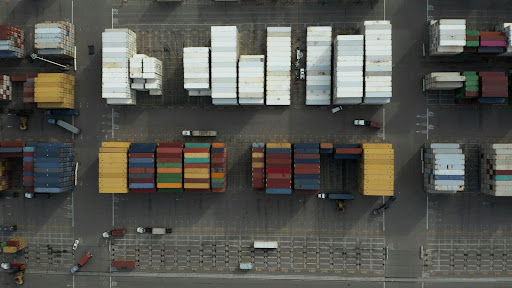In the era of digital transformation, agility is the name of the game. Whether you’re an independent retailer, an event planning firm, or a fast-growing construction outfit, the difference between success and stagnation often comes down to how well you manage your logistics. Increasingly, companies are turning to modern, modular services like WheeKeep to streamline storage and logistics in real time. This shift isn’t just convenient—it’s revolutionizing how small and mid-sized enterprises (SMEs) operate.
From on-demand storage and mobile access to smart scheduling and real-time inventory tracking, logistics isn’t what it used to be. For SMEs navigating tight margins and fierce competition, adopting a smart logistics model isn’t optional anymore. It’s a survival strategy.
Logistics: The Unsung Backbone of Every Business
For many SMEs, logistics remains one of the most under-optimized aspects of daily operations. Often treated as a behind-the-scenes function, logistics quietly determines how quickly you can ship, how much you can store, and how efficiently you fulfill demand.
Traditionally, managing logistics meant either leasing costly warehouse space or coordinating a web of delivery, inventory, and supply operations that felt more like a juggling act than a strategy. But in 2025, cloud-based solutions, IoT tracking, and mobile-enabled storage services have flipped the narrative.
The Rise of Modular, Mobile Logistics
Enter smart storage and mobile logistics platforms. These tools aren’t just about moving boxes—they’re about removing friction. Need temporary space for holiday inventory? Want to relocate excess office equipment during a remodel? Mobile storage solutions offer pickup, secure storage, and redelivery, all on your schedule.
This isn’t just helpful for eCommerce businesses. Real estate agents, seasonal event planners, and even local government offices now rely on modular storage that adapts to project timelines and spatial limitations.
By using app-based scheduling and GPS-enabled transport systems, these platforms let businesses reclaim control of their physical operations. The result? Less downtime, fewer costly mistakes, and greater customer satisfaction.
Data-Driven Inventory Management
Smart logistics thrives on data. From RFID tags to cloud-based tracking dashboards, SMEs now have access to enterprise-level insights at small-business prices. That means real-time visibility into stock levels, location, and movement.
Lost tools, forgotten shipments, or last-minute scrambles become a thing of the past when systems are integrated. The benefit is two-fold: operations become more efficient, and customers get their goods faster and with fewer errors.
According to a ResearchGame article, supply chain transparency and digitization are among the top factors improving logistics resilience for small businesses in the post-pandemic world. As these tools become more accessible, they level the playing field.
Cost Efficiency: Spend Smarter, Not Bigger
Let’s be honest—SMEs can’t afford the same level of waste as their corporate counterparts. Traditional logistics systems require high upfront investments: dedicated warehouse space, manual labor, and outdated tracking methods.
But smart logistics flips that model. With modular storage and subscription-based access to logistics tools, businesses pay only for what they use. This helps shift fixed costs into variable ones, improving cash flow and budgeting accuracy.
It also reduces the need for in-house logistics teams. When platforms manage the nuts and bolts of storage, delivery, and retrieval, businesses can reallocate talent to higher-value functions like sales, customer support, or R&D.
Scaling Without the Growing Pains
Every SME hits a point where they outgrow their systems. The trick is scaling without losing control. Smart logistics is built for just that. Services like WheeKeep offer plug-and-play storage options that expand with your business, no construction required.
Whether you’re launching new locations, testing seasonal pop-ups, or managing short-term projects, you can scale logistics up or down without disrupting core operations. That flexibility removes a major roadblock to growth.
And because the systems are digital-first, they can integrate with other tools you’re already using—from CRMs to eCommerce platforms to accounting software.
Environmental Responsibility Meets Practicality
Another unexpected benefit of smart logistics? A smaller carbon footprint. Efficient routing algorithms, shared transport models, and reduced waste all contribute to more sustainable operations.
Instead of trucks making half-full runs or warehouses burning energy 24/7, modular logistics optimizes usage. That translates into fewer emissions and often lower costs.
Sustainability also happens to be a selling point. With ESG standards becoming more important to both investors and consumers, showing that your business has a lean, green logistics strategy can become a marketing edge.
Remote Workforces and Distributed Teams
In 2025, remote and hybrid teams aren’t the exception—they’re the rule. That brings new challenges to storing and accessing materials. A centralized office with a single stockroom no longer cuts it.
Smart logistics enables decentralized access. Need supplies delivered to a regional rep? Want to rotate trade show equipment across cities? With mobile storage and remote-access platforms, your team can work anywhere—and still get what they need when they need it.
This agility keeps you competitive and reduces the friction that often comes with distributed teams.
Customer Expectations Are Changing—Fast
Let’s not forget the end user. Consumers in 2025 expect same-day shipping, no-hassle returns, and instant inventory visibility. If you’re not meeting those expectations, someone else is.
Smart logistics helps SMEs offer big-business service levels. Real-time tracking, proactive notifications, and rapid fulfillment aren’t just nice to have anymore. They’re the baseline.
Even brick-and-mortar stores benefit. Imagine knowing the exact delivery window for a new inventory shipment, being able to reroute it via app, or automatically updating online stock levels as deliveries occur.
Looking Ahead: What’s Next in SME Logistics?
The landscape is still evolving. As AI and machine learning continue to mature, expect logistics systems that predict demand before you even place an order. Autonomous delivery vehicles and warehouse robotics are no longer sci-fi concepts—they’re pilot programs in major cities.
What’s clear is that the future will reward the adaptable. Those who view logistics not as a back-end necessity but as a front-line driver of growth will gain a measurable advantage.
In a world where agility, efficiency, and customer experience define success, SMEs can no longer afford outdated logistics models. Smart logistics—from modular storage to real-time tracking—offers the kind of scalable infrastructure that used to be reserved for enterprise players.

